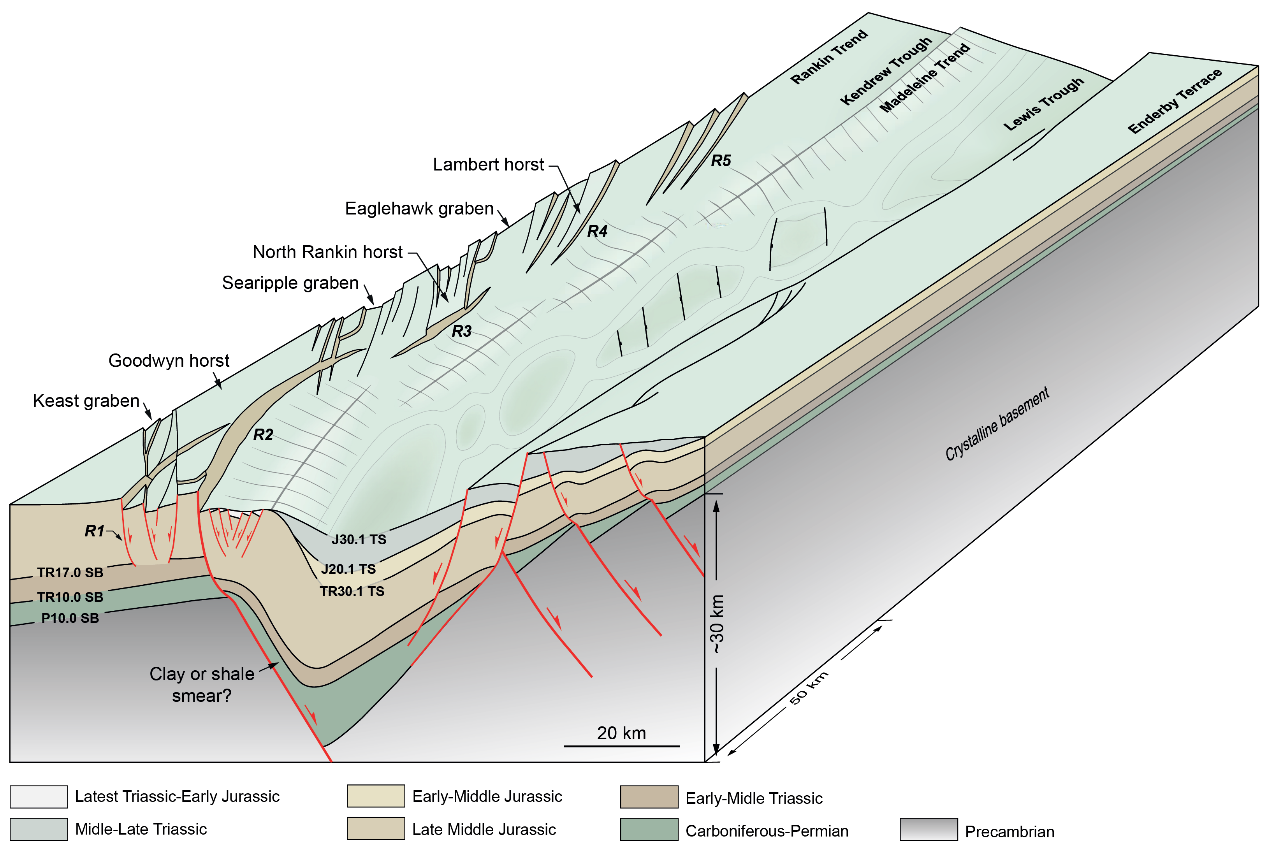Editor: 谢佳 Author: Time: 2023-10-23 Number of visits :205
The origin of the Exmouth and Dampier sub-basins in the inner rift system of the North West Shelf (NWS), Australia, remain poorly understood, despite intensive industrial exploration for over 50 years. By integrating deep 2D and basin-wide 3D seismic reflection data, it is concluded that the Exmouth and Dampier sub-basins are primarily controlled by crustal-scale faults that separate different crustal entities of the Pilbara Craton/Capricorn Orogen and the Exmouth Plateau. These faults were first formed during Late Paleozoic rifting and were reactivated during Late Triassic to Late Jurassic rifting. The reactivation of these faults was accommodated by monocline deformation in the stratigraphic cover due to the presence of thick (~7 km), mechanically weak layers of Upper Paleozoic and Lower to Middle Triassic units. The monocline is connected by a ramp-syncline that constitutes the main part of the depocenters of the Exmouth and Dampier sub-basins (Figure 16). It was partially breached by the Rankin Fault, a NE-trending, right-stepping fault system, during Callovian–Oxfordian extension and controlled the development of crestal-collapse grabens in the hangingwall. This study reveals crustal-scale extensional fault-related folds and their complexity in secondary structures in unpresented detail. It provides a guideline for understanding extensional fault-related folding and for deep petroleum system exploration in other extensional basins worldwide.

Figure 16. Block diagrams showing structural elements associated with extensional fault-related fold across the Dampier-Rankin basin. Note that the Lewis Trough consists of a series of right-stepping depocenters. The Rankin fault segments are connected with deep fault and form a series of right-stepping anticlines in the hangingwall. Horst-and-grabens develop on the Rankin Trend with some extend into the Kendrew Trough.
Acritical Information: Hongdan Deng, Ken McClay, Hanlin Chen, Emma Finch, Dariusz Jablonski, Sukonmeth Jitmahantakul; Structural inheritance controls crustal-scale extensional fault-related folding in the Exmouth and Dampier sub-basins, North West Shelf, Australia; AAPG Bulletin, 2023.
